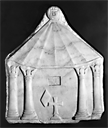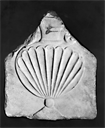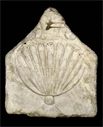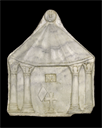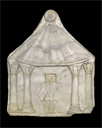Bibliography
The Dumbarton Oaks Research Library and Collection of Harvard University, Handbook of the Collection (Washington, D.C., 1946), 20, no. 14.
P. Underwood, "The Fountain of Life in Manuscripts of the Gospels," Dumbarton Oaks Papers 5 (1950): 41-138, esp. 91-93, fig. 39-40.
The Dumbarton Oaks Collection, Harvard University (Washington, D.C., 1955), 18, no. 47.
V. H. Elbern, "Der eucharistische Kelch im frühen Mittelalter," Zeitschrift für Kunstwissenschaft 17 (1963, repr. Berlin, 1964): 1-76, 117-88, esp. 158, fig. 109, 110.
———, Der eucharistische Kelch im frühen Mittelalter (Berlin, 1964), 120 n. 120, fig. 109-110.
L. Kötzsche-Breitenbruch, "Das Heilige Grab in Jerusalem und seine Nachfolge," in Akten des XII. Internationalen Kongresses fur christliche Archaölogie: Bonn, 22.-28. September 1991 (=Jahrbuch für Antike und Christentum, Ergänzungsband 20), ed. E. Dassmann and J. Engemann (Munster, Città del Vaticano, 1995), esp. 275, pl. 28d.
G. Vikan, Catalogue of the Sculpture in the Dumbarton Oaks Collection from the Ptolemaic Period to the Renaissance, Dumbarton Oaks Catalogues (Washington, D.C., 1995), 82-86, no. 34.
M. Biddle, The Tomb of Christ (Gloucestershire, England, 1999), 26, fig. 24.
A. Kirin, J. N. Carder, and R. S. Nelson, Sacred Art, Secular Context : Objects of Art from the Byzantine Collection of Dumbarton Oaks, Washington, D.C., Accompanied by American Paintings from the Collection of Mildred and Robert Woods Bliss, ed. A. Kirin, exhibition catalogue, Georgia Museum of Art, (Athens, Ga., 2005), 112, no. 56.
G. Bühl, ed., Dumbarton Oaks: The Collections (Washington, D.C., 2008), 116, pl. p. 117.
S. Curcic, E. Hadjitryphonos, K. E. McVey, and H. Saradi, Architecture as Icon: Perception and Representation of Architecture in Byzantine Art, exhibition catalogue, Princeton University Art Museum, March 6 - June 7, 2010, (Princeton, N.J.: New Haven, 2010), 328-329, no. 73.
T. Rainer, Das Buch und die vier Ecken der Welt: von der Hülle der Thorarolle zum Deckel des Evangeliencodex, Spätantike, frühes Christentum, Byzanz. Reihe B, Studien und Perspektiven (Wiesbaden, 2011), pl. XXXVII, fig. 214.
Kaiser und Kalifen: Karl der Grosse und die Mächte am Mittelmeer um 800 (Darmstadt, 2014), 37, fig. 29.
M. Vicelja-Matijasic, "Sanctified Topos to Iconic and Symbolic Model: Two Early Representations of the Holy Sepulchre in Croatia," in Visual Constructs of Jerusalem, ed. B. Kühnel, G. Noga-Banai and H. Vorholt (2014), esp. 115, fig. 11.5.
J. Bogdanovic, The Framing of Sacred Space: The Canopy and the Byzantine Church, Oxford University Press (2017), fig. 5.5.
Exhibition History
Washington, DC, Dumbarton Oaks, "Selections of Sculpture from the Early Byzantine Period," Nov. 1995 - Aug. 1996.
Athens, GA, Georgia Museum of Art, “Sacred Art, Secular Context: Objects of Art from the Byzantine Collection of Dumbarton Oaks, Washington, D.C., Accompanied by American Paintings from the Collection of Mildred and Robert Woods Bliss,” May 15 – November 6, 2005.
